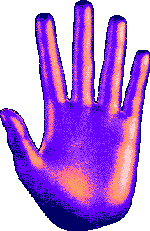












“Man thinks in pictures” (Jean Baudrillard).
Drawings are the communication of reality and representation of a building. That is what we understand. In a complex world like ours, at a time when there is a flow of information and a flood of images, future architects must understand how drawings work. But what makes a drawing work? Is it the balance between what we understand and what not? One of the fundamental theorems this semester was, not to try to illustrate an idea that already exists. But to trust in the process, to make quick decisions and to learn from mistakes. Consider the drawing as a non-linear process. Starting with the impulse that every line we set is a boundary, I was already very enthusiastic about working with FAT STUDIO at the beginning of the semester. During the working process, the same questions were asked again and again: What‘s your strongest idea, and what is the drawing doing for it? What does materiality mean? Architectural drawings are the tools of every architect‘s trade, they were already in Vitruvs time. Even if nowadays one moves more the PC mouse and less the pencil or even ink, architectural drawings are one of the most important instruments to communicate our ideas. I have missed this examination as well as an awareness of the drawing as such in my previous studies. What are the rules I have set for myself? Can I even read or understand my drawings? What information is hidden in them? Is it the same information that I want to communicate?